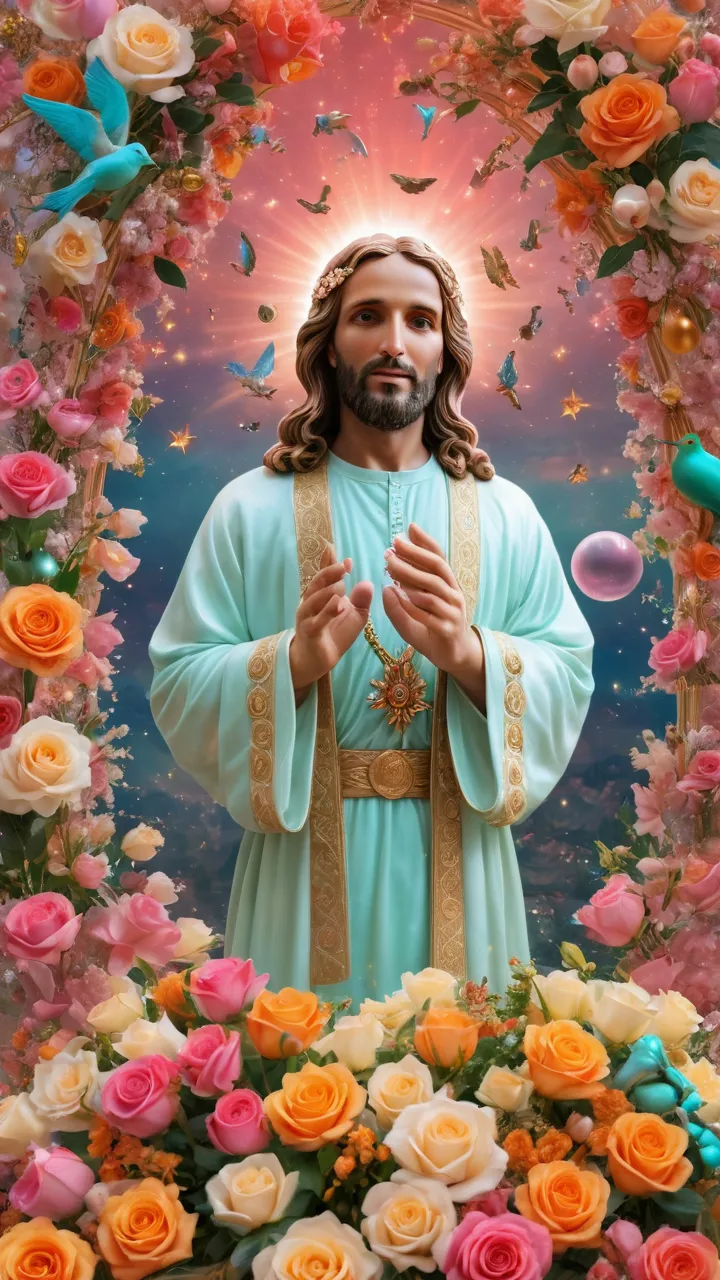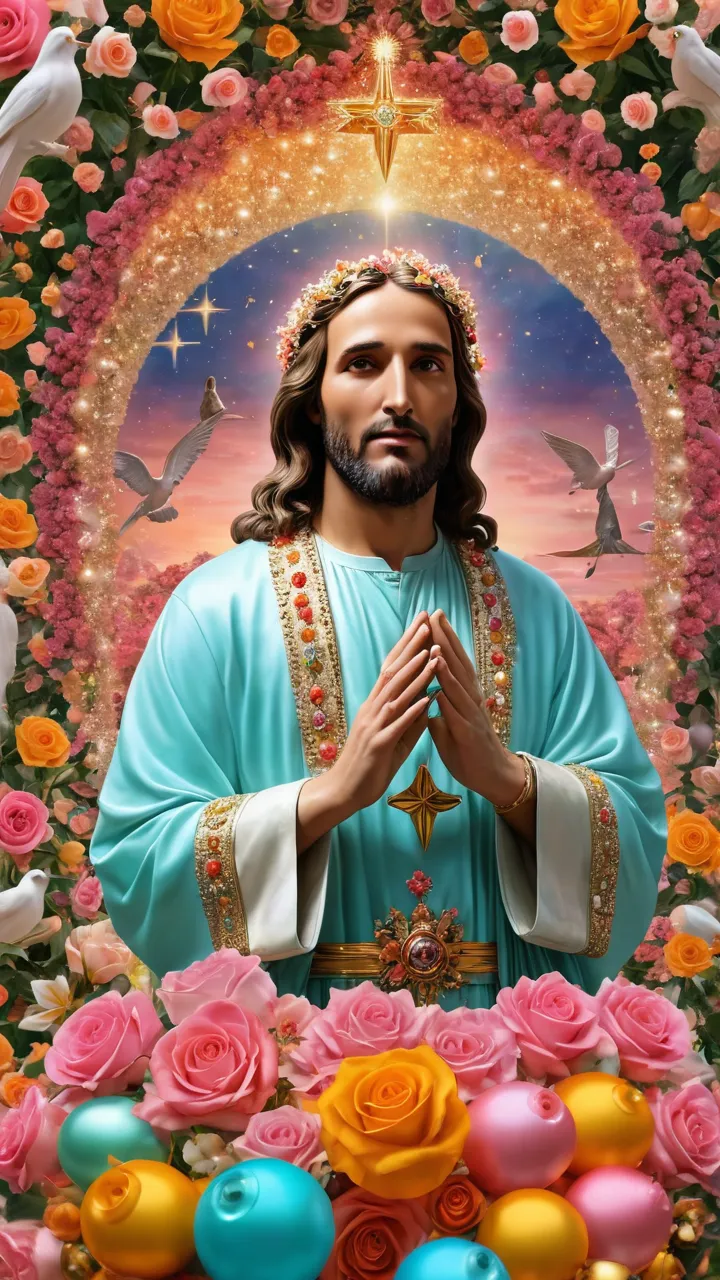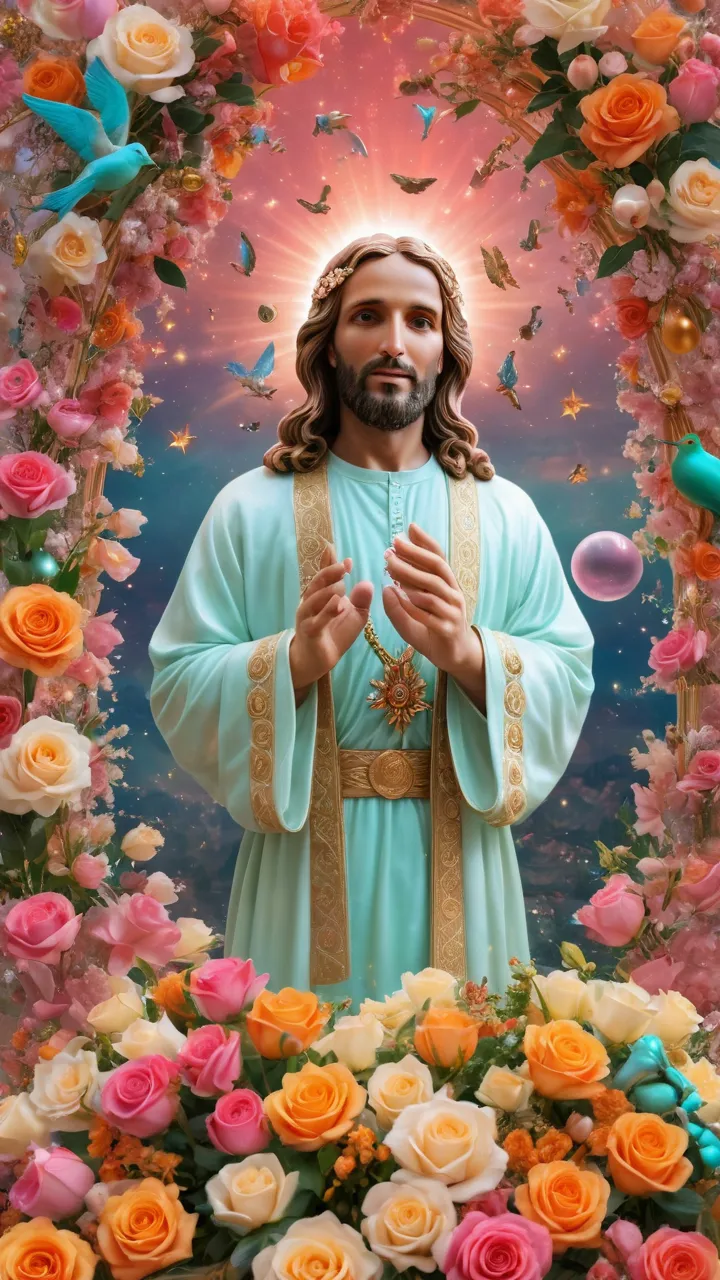Jai Narayan Namo: A Deep Dive into the Mantra and its Significance
The resonant chant of “Jai Narayan Namo” echoes through temples, homes, and hearts across India and beyond. This powerful mantra, a simple yet profound invocation of Lord Vishnu, holds deep spiritual meaning and resonates with devotees seeking blessings, peace, and spiritual growth. This article delves into the rich history, cultural significance, and spiritual implications of this beloved mantra, exploring its various forms and interpretations. We’ll also examine its relevance in modern life and answer frequently asked questions.
Understanding the Components of “Jai Narayan Namo”
The mantra “Jai Narayan Namo” is a beautiful blend of Sanskrit words, each carrying immense weight and significance. Let’s break down its components:
-
Jai (जय): This word translates to “victory,” “glory,” or “homage.” It expresses a feeling of reverence and joyful surrender to the divine. It’s not merely a passive acknowledgment but an active expression of devotion and celebration of the divine’s power and grace.
-
Narayan (नारायण): This is one of the most important names of Lord Vishnu, the preserver god in the Hindu trinity. Narayan is a compound word: “Nara” means “man” or “human being,” and “ayana” means “abode” or “shelter.” Therefore, Narayan signifies the ultimate refuge and shelter for all beings, highlighting Vishnu’s role as the protector and sustainer of the universe. He is the source of all creation, the one who upholds dharma (righteousness), and the ultimate rescuer from suffering. The name itself evokes a sense of comfort, security, and hope.
-
Namo (नमो): This word means “I bow down,” “I offer my salutations,” or “I prostrate before.” It signifies profound respect, humility, and complete surrender to the divine. It’s an act of self-effacement, acknowledging the supreme power and authority of Narayan.
Thus, the complete mantra, “Jai Narayan Namo,” can be interpreted as: “Victory to Narayan! I bow down to Narayan!” It’s a powerful affirmation of faith, an expression of devotion, and a plea for divine grace and protection.
The Significance of Lord Vishnu and his Names
Lord Vishnu, the preserver in the Hindu trinity (along with Brahma the creator and Shiva the destroyer), is revered for his countless avatars (incarnations) and his role in maintaining cosmic balance. He is often depicted with a dark blue complexion, four arms, and holding various symbolic objects like the conch shell (shankha), discus (chakra), mace (gada), and lotus flower (padma). These objects represent his divine qualities and powers. His avatars, like Rama and Krishna, are celebrated throughout India and hold immense cultural and spiritual significance.
The numerous names of Vishnu, including Narayan, are considered sacred mantras themselves. Each name encapsulates a specific aspect of his divine nature, and chanting them is believed to purify the mind, enhance spiritual awareness, and invoke his blessings. The use of these names in mantras and prayers is a core element of Vaishnavism, the branch of Hinduism dedicated to the worship of Vishnu.
Cultural and Regional Variations of the Mantra
While “Jai Narayan Namo” is a widely used and understood mantra, variations exist depending on region, tradition, and personal preference. Devotees may add other invocations before or after the core mantra, such as:
-
Jai Shree Narayan Namo Namah: This adds “Shree” (श्री), meaning “auspicious” or “sacred,” emphasizing the divine’s auspicious nature. The repetition of “Namo” intensifies the feeling of reverence and surrender.
-
Om Jai Narayan: This concise version incorporates “Om,” the primordial sound considered the source of all creation. Adding “Om” elevates the mantra’s spiritual power and connects it to the ultimate reality.
-
Jai Narayan Jai Vishnu: This variation includes “Vishnu,” another prominent name for the deity, further emphasizing his divine attributes and roles.
-
Hari Om Namo Narayana: This combines “Hari,” another name for Vishnu, with “Om” and “Narayan,” creating a powerful and holistic invocation.
These variations demonstrate the fluidity and adaptability of Hindu mantras, reflecting the diverse ways devotees express their faith and connect with the divine. The core essence, however, remains consistent: a heartfelt offering of devotion and surrender to Lord Vishnu.
The Spiritual Practice of Chanting “Jai Narayan Namo”
Chanting “Jai Narayan Namo” is more than just reciting words; it’s a spiritual practice that can bring about profound changes in one’s life. The benefits of regular chanting include:
-
Stress Reduction: The rhythmic repetition of the mantra can calm the mind, reduce stress and anxiety, and promote relaxation.
-
Increased Focus and Concentration: Consistent chanting helps improve focus and concentration, leading to greater mental clarity and stability.
-
Spiritual Growth: The mantra acts as a vehicle for connecting with the divine, fostering inner peace, and enhancing spiritual awareness.
-
Positive Energy: Chanting is believed to attract positive energy and create a harmonious environment.
-
Blessings and Protection: Devotees believe that chanting “Jai Narayan Namo” brings blessings, protection, and guidance from Lord Vishnu.
The best time to chant is early morning or evening, in a quiet and peaceful environment. However, the mantra can be chanted anytime, anywhere, as a silent prayer or an audible invocation. The key is sincerity and devotion. The more heartfelt the chanting, the more profound the benefits.
The Mantra in Modern Contexts
Despite its ancient origins, the mantra “Jai Narayan Namo” remains highly relevant in modern life. In a world filled with stress, uncertainty, and challenges, the mantra offers solace, strength, and a connection to something greater than oneself. Many people find comfort and guidance in its simple yet powerful words, using it as a tool for navigating life’s complexities. Its use extends beyond personal can be interpreted as “Glory to Narayan! I bow to Narayan!” It’s a concise yet powerful statement of devotion, encapsulating praise, respect, and heartfelt surrender to the divine principle embodied by Lord Vishnu.
Narayan: The Preserver and Protector
Lord Vishnu, often referred to as Narayan, is a central deity in Hinduism, representing preservation, protection, and cosmic order. He is depicted as the sustainer of the universe, upholding dharma (righteousness) and ensuring the balance of creation. His avatars (incarnations), such as Rama, Krishna, and Buddha (according to some interpretations), demonstrate his diverse roles in guiding humanity and restoring harmony.
The name “Narayan” itself carries profound symbolic weight. The Rigveda, one of the oldest Hindu scriptures, refers to the primordial waters from which the universe emerged. Narayan, dwelling within these waters, represents the source of all creation, the divine consciousness that permeates everything. He is the ultimate refuge, the protector of the vulnerable, and the guiding force towards liberation.
The Power of Mantra Repetition
The repetition of mantras, like “Jai Narayan Namo,” is a cornerstone of Hindu spiritual practice. It’s not merely a rote recitation; it’s a meditative process that allows the devotee to connect with the divine energy associated with the mantra. Regular repetition is believed to purify the mind, enhance focus, reduce stress, and foster a deeper sense of peace and connection with the divine.
The rhythmic chanting of the mantra creates vibrations that are believed to resonate with the subtle energies within the body and the cosmos. This resonance is said to lead to a gradual transformation of consciousness, aligning the individual with the divine principle. The consistent practice of repeating “Jai Narayan Namo” can foster a sense of tranquility, inner strength, and unwavering faith.
Variations and Related Mantras
While “Jai Narayan Namo” is a powerful mantra in its own right, it’s often combined with other invocations or used within a larger context of devotional practice. Some related mantras include:
-
Om Namo Narayan: This is a more traditional and widely used mantra, incorporating the sacred syllable “Om,” which represents the ultimate reality. The addition of “Om” elevates the mantra to a higher spiritual level.
-
Jai Shree Narayan: “Shree” denotes auspiciousness and prosperity, adding another layer of meaning to the invocation.
-
Jai Narayan Jai Vishnu: This expands the mantra to include another name for Lord Vishnu, highlighting his multifaceted nature.
-
Hari Om Namo Narayana: “Hari” is another name for Lord Vishnu, often associated with his playful and compassionate aspects.
These variations, while subtly different, all carry the same core message of devotion and surrender to Lord Narayan. The choice of which mantra to use often depends on personal preference, tradition, or the specific context of the devotional practice.
Jai Narayan Namo in Daily Life
The mantra “Jai Narayan Namo” isn’t limited to formal religious practices. It can be integrated into daily life as a powerful tool for spiritual growth and well-being. Here are some ways to incorporate it:
-
Morning and Evening Chanting: Begin and end your day with the mantra to set a positive and devotional tone.
-
Meditation: Use the mantra as a focal point during meditation to calm the mind and connect with the divine.
-
Times of Stress: Reciting the mantra during stressful situations can provide a sense of calm and reassurance.
-
Before Important Events: Chanting the mantra before undertaking significant tasks or events can invoke blessings and positive energy.
By weaving “Jai Narayan Namo” into the fabric of daily life, devotees can cultivate a deeper connection with the divine and experience its transformative power.
Contemporary Expressions of Devotion
The devotion to Narayan, expressed through the mantra “Jai Narayan Namo,” is not confined to traditional practices. In the modern age, it manifests in diverse ways, reflecting the evolving landscape of spirituality. Social media platforms like Facebook, Instagram, and X (formerly Twitter) are filled with posts and videos dedicated to Narayan, showcasing the mantra’s continued relevance and widespread appeal. YouTube channels offer hours of devotional music featuring the mantra, allowing devotees to engage in virtual kirtan (devotional singing). These modern expressions demonstrate the mantra’s enduring power to connect individuals with their faith, regardless of geographical boundaries or cultural context.
The accessibility of technology has democratized spiritual practices, making resources like devotional music and online communities readily available. This digital evolution of faith has broadened the reach of “Jai Narayan Namo,” allowing individuals worldwide to connect with this ancient mantra and experience its spiritual benefits.
The Cultural Significance of Jai Narayan Namo
The mantra “Jai Narayan Namo” holds immense cultural significance, particularly within communities that venerate Lord Vishnu. It’s often recited during religious ceremonies, festivals, and personal devotional practices. The mantra’s presence in various forms of art, music, and literature underscores its deep-rooted connection to the cultural fabric of Hinduism. It’s a unifying force, bringing together devotees from diverse backgrounds under a shared banner of faith and devotion.
The cultural resonance of the mantra is evident in its integration into various aspects of life. From temple rituals to personal prayers, “Jai Narayan Namo” serves as a powerful expression of faith and cultural identity. Its enduring presence in cultural traditions testifies to its enduring spiritual power and its capacity to connect individuals with their heritage.
FAQ: Addressing Common Questions about Jai Narayan Namo
Q1: What are the benefits of chanting Jai Narayan Namo?
A1: Chanting “Jai Narayan Namo” is believed to offer numerous benefits, including mental clarity, stress reduction, enhanced focus, inner peace, and a deeper connection with the divine. It’s considered a powerful tool for spiritual growth and self-transformation.
Q2: Is there a specific way to chant Jai Narayan Namo?
A2: While there’s no single prescribed method, many devotees chant the mantra with reverence and focus, often sitting in a quiet space with their eyes closed. The number of repetitions can vary, depending on individual preference and the context of the chanting.
Q3: Can anyone chant Jai Narayan Namo, regardless of their religious background?
A3: While the mantra is deeply rooted in Hindu tradition, its essence of devotion and reverence to a higher power is universally applicable. Many individuals from diverse backgrounds find solace and meaning in chanting this mantra.
Q4: Are there any specific times or situations when it’s best to chant Jai Narayan Namo?
A4: Devotees often chant the mantra during morning and evening prayers, during meditation, or during times of stress or uncertainty. It can be a source of comfort and strength in various life situations.
Q5: How can I learn more about the spiritual significance of Narayan?
A5: You can learn more about Narayan by studying Hindu scriptures like the Bhagavad Gita and the Vishnu Purana, exploring devotional literature, attending religious ceremonies, or engaging with knowledgeable individuals within the Hindu faith. Numerous online resources and books can also provide valuable insights.
Q6: Is there a specific pronunciation for Jai Narayan Namo?
A6: While slight variations in pronunciation may exist across different regions and traditions, the core sounds are generally consistent. It’s helpful to listen to recordings of experienced chanters to familiarize yourself with the proper pronunciation.
Q7: Can I use Jai Narayan Namo for specific intentions or requests?
A7: While the primary purpose is devotion and connection, some believe that chanting the mantra with a specific intention can amplify its positive effects. However, it’s important to remember that the mantra’s power lies primarily in its devotional aspect.













